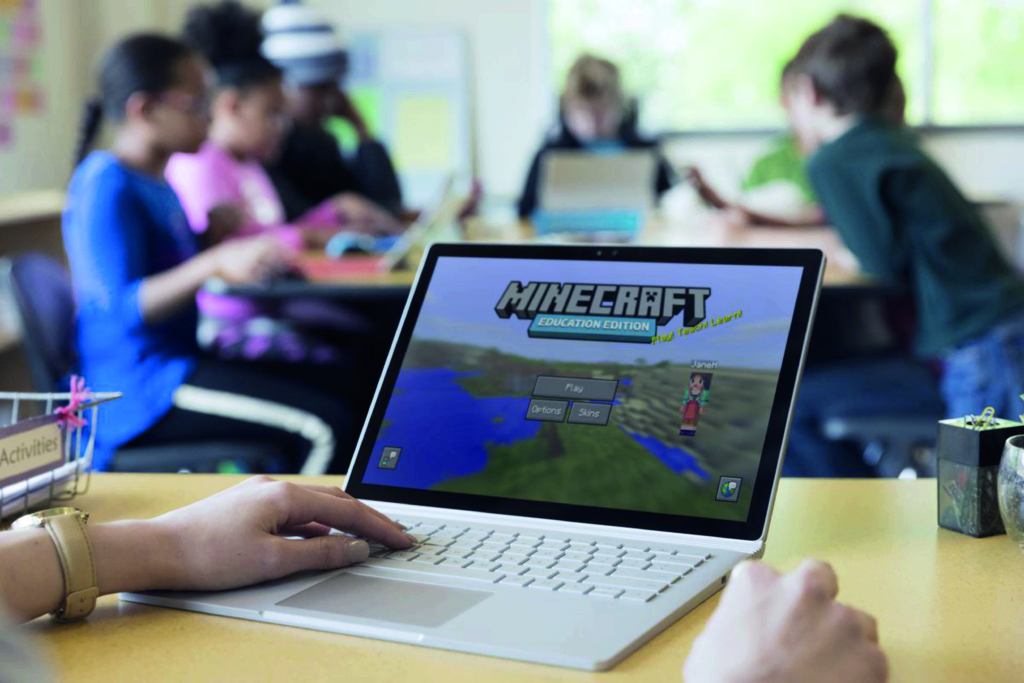
Minecraft is one of the most played, most loved, and most ‘blocky’ games ever released. For the uninitiated, Minecraft randomly generates a world filled with movable and makeable digital ‘blocks’. Many compare it to having unlimited Legos, yet the online component allows players to build together, fulfilling the innate desire to show others their work, which creates armies of Minecraft recruiters. It is an open-ended sandbox for play that ignites millions of players’ imaginations.
Normally, games and other entertainment media release to large sales and then fade away over time. Uniquely, when Minecraft was released as an independent game in 2009, it slowly gained steam until Microsoft bought it for a staggering $2.5 billion dollars1 in 2014 and kept it on track. Minecraft has sold over 144 million units and continues to host over 74 million players every month.2 Yet sales alone do not quite capture the whole picture of Minecraft’s adoption into schools.
Microsoft is appealing to teachers around the world. Microsoft also quietly acquired Minecraft: Education Edition3 and have built classroom tools into their delivery system to make headway into a grand vision of Minecraft being as common as a notepad in classrooms. It is working. They claim that MinecraftEDU now serves over 10,000 schools in 11 different languages.4 In combination with traditional classroom resources, Minecraft has remarkable potential as a digital platform for students to connect content with their own creations.
Yet for students and teachers alike, it is not necessarily about Minecraft in particular. It is about a simple, easy to use, classroom-only, multi-player design space. Imagine an art studio with unlimited space, materials and safety. That alone would be appealing, but Minecraft additionally provides a space for digitally savvy learners, creative cognition, authentic performance and assessment. These are all skills that are called for by educators, academics, practitioners and economic voices like the Partnership for 21st Century Skills (Trilling and Fadel, 2012). The goal is not just to play games, but to engage, motivate and excite learning for the next generation. Current research on video games, when balanced with other life activities, may have positive outcomes for learning (see Gee, 2007; Prensky, 2006; Squire, 2011). Sanford and Williamson’s 2005 work, for instance, summarises that games can enhance media literacy, exercise the brain, support problem solving, persuade and be designed or used for ‘serious’ purposes.
As a teacher, however, the proof is in the practice. My own interest in Minecraft is because it engaged my children and my students. As I began work on my book TeacherCraft, I spoke with early adopting teachers (Dikkers, 2015), who were seeing the same engagement and learning that I was. In our conversations, I became more interested in what the teachers did with Minecraft than the game itself. What do they do between hearing an idea and using it with students in their classrooms? Minecraft may be a passing trend, but teachers will continue to find amazing classroom tools, and I wanted to know more about that process.
How exactly do innovative teachers go about innovating? I approach teaching as an act of design. Designers go through a more iterative process of validation, experimentation, appropriate, refinement and assessment of core ideas. They are lifetime searchers and seekers of innovation and solutions to questions they generate and pursuits they engage with.